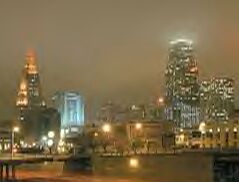
Light Rail Progress can be contacted at: |
Yet another major American city is moving toward installing light rail
transit (LRT). Voters in Kansas City will go to the polls on August 7th
to consider a proposed LRT system with a nearly 24-mile, $793 million north-south starter line. LRT has been selected out of an exhaustive process of study and community involvement that examined 28 different technologies and lasted decades. The proposal being presented to voters was developed through a three-year cooperative effort by the Kansas City Area Transportation Authority (KCATA) and the cities of Kansas City, Missouri, and North Kansas City. To fund the project, voters must approve a 25-year, half-cent sales tax initiative. Getting voter approval for a relatively unfamiliar transit system like LRT is always an uphill struggle – especially when taxes must be approved to finance it. But whether it wins or loses, the Kansas City proposal demonstrates the growing appeal light rail has for cities grappling with serious mobility problems. The Kansas City Council recently authorized the tax proposal for an
initial route that would stretch some 23.8 miles, from 75th St. on the south end, through the University District, midtown, and downtown Kansas City,
across the Missouri River, and into the "Northland" (the northern part
of the metro area), stopping at the northern starter line terminus of
Vivion Road. The starter system would include 2,500 parking spaces
at park & ride stations. it's hoped that operation would begin in 2008. KCATA Chief Engineer Dick Jarrold pointed out that "This plan will
provide service to the region's most densely populated areas, and
establishes a very strong central route that serves downtown, the
urban core, and the Plaza – and crosses the river into the Northland.
Because it is central, this route allows for expansion in all directions."
The starter line is projected to carry more than 15,000 rider-trips a day,
of which over 6,000 would be totally new trips not presently using transit.
Currently there are more than 40,000 daily transit trips in the corridor,
the highest volume in the service area of the KCATA. Approximately
254,000 jobs are currently located along the proposed route. Although the initial route would not extend to Kansas City international Airport (KCi), in the extreme northern edge of the metropolitan region, the council plan calls for acquiring land to be used for an eventual LRT airport extension. A southern extension is also planned. The initial line is projected to cost $793 million (2001 dollars), of which
60%, or $475 million, would be covered by federal Section 5309 funds.
Annual operating costs totalling $15 million would be covered by the
increased salestax revenues voters are being asked to approve. Local decisionmakers and planners expect that the new LRT system would not only significantly impact the growing problems of sprawl and traffic congestion in the region, but also would spark economic development within the urban core. "it's only partly about moving people around" says Leonard Graham,
an engineer who co-led the city-sponsored Central Business Corridor
(CBC) Transit Study steering committee that developed the light rail
plan and route. "it's also about building a city."
"I've seen first-hand in St. Louis what light rail can do for a city and for
a public transit system. This is a real exciting opportunity for Kansas
City and the KCATA" said Mark Huffer, general manager of the transit
system. "Our goal is to provide the Kansas City region a multi-modal
transit system reflective of a progressive metropolitan area." In authorizing the August 7 tax vote, the city council also fully supported KCATA's plans to apply for the funds needed for light rail engineering and construction. While the city conducted the CBC study, the KCATA explored transit options north of the Missouri River. The study led to a decision to extend the light rail route another two miles to a major intersection along the interstate 29 corridor. A Kansas City Star editorial in support of the light rail plan urged voters to look toward Kansas City's long-term future, stating, "The proposed route connects the city's major activity centers – the Plaza, Crown Center and downtown....The plan would add another access route through the transportation choke point ... created by the river." Will Kansas City voters okay this leap into a new mobility future? Proponents of better mobility are watching the outcome with fingers crossed. Rev. 2001/06/25 |
|
|
|